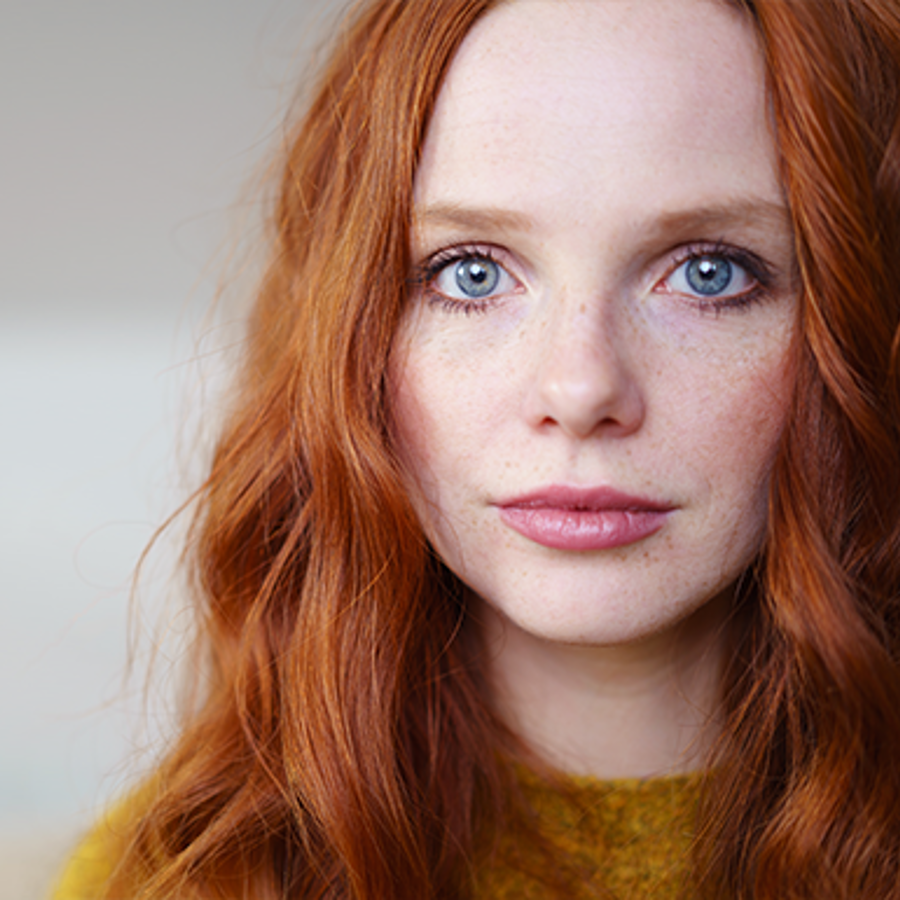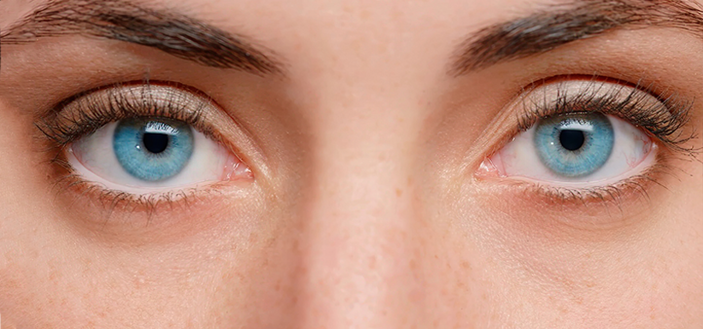
What are the chances my child will have red hair and blue eyes?
February 16, 2006

- Related Topics:
- Red hair,
- Hair color,
- Pigmentation traits,
- Eye color,
- Dominant and recessive,
- Classical genetics
A curious adult from Ohio asks:
"I have red hair and blue eyes, both of my parents have blue eyes but light brown hair, My husband had dark brown hair and dark brown eyes, his parents both have dark brown hair and his mom has blue eyes and his dad has brown...my question is, if we have a child what are its chances of having blue eyes or red hair?"
Editor’s note (3/2/2021): The predictions in this article are based on simple genetic models, such as a two-gene model for eye color and a single gene for red hair. However, as the article below correctly points out, there are actually many genes that affect human pigmentation traits. That makes it difficult to give accurate predictions for what coloring a child might have.
The chances for green or blue eyes are around 50%. The chances for red hair depend entirely on whether or not your husband carries a hidden red hair gene. If he does, then there is most likely a 50-50 shot for a redhead. If he doesn't, then the chances are close to zero.
So, if your husband is a carrier for red hair, then your chances for a redhead with blue or green eyes is 1 in 4 (we separate out the two below). If he isn't a carrier, then chances are pretty close to zero for a blue-eyed child with red hair. Let's see where I got those numbers.
Eye color
As I said earlier, your chances for a child with blue or green eyes are around 50%. These chances are based on an eye color model where two genes determine eye color.
The first gene is the brown-blue gene, BEY2. It comes in two forms, a brown (B) and a blue one (b). Brown is dominant over blue which means if either or both of your copies of this gene are B, then you have brown eyes (remember, we have two copies of most of our genes — one from mom and one from dad).

OK, so we know you are for sure bb (both copies are blue); that is the only way to get blue eyes. And we know your husband has at least one B since he has brown eyes.
But what about the other copy of his brown-blue gene? It is often hard to figure out if someone is a blue eye carrier. However, because his mom has blue eyes, we know he got a b from her. In other words, he is Bb — a brown-eyed carrier of blue eyes.
So what does this mean for your children? It means that you will always pass a blue eye version (b) and that your husband will pass one onto his kids half the time. Your kids have a 50-50 shot of not having brown eyes.
We can't rule out that they'll have green eyes, though. This is because there is a 2nd gene, a green-blue gene (GEY) that is involved as well. It comes in two forms, a green (G) and a blue (b) one.
One more thing, the brown version of BEY2 is dominant over the green version of GEY, which is dominant over the blue versions of both genes. In other words, brown trumps green and blue, and green trumps blue.
We don't know your husband's green gene status because we don't know his dad's green gene status (we know yours because you have blue eyes). Because his mom had blue eyes, we know she is bb for the green-blue gene. Which means your husband has at least one b.
If your husband is Gb, then each child has a 1 in 4 chance for blue eyes, a 1 in 4 chance for green, and a 1 in 2 chance for brown. If he is bb for the green-blue gene, then your kids have a 50-50 shot at blue and a 50-50 shot at brown eyes. Our answer here hopefully makes this all more clear.
Your two possible eye color scenarios:
1) Your husband is a carrier for green eyes (BbGb)
|
|
BG |
Bb |
bG |
bb |
|
bb |
Bb Gb |
Bb bb |
bb Gb |
bb bb |
2) Your husband is not a carrier for green eyes (Bbbb)
|
|
Bb |
bb |
|
bb |
Bb bb |
bb bb |
A word of warning
As complicated as this is, it doesn't explain everything about eye color. There are cases where blue-eyed parents have green or brown-eyed kids even though this is impossible by this model.
These sorts of things happen often enough that it probably isn't due just to new mutations in their eye color genes. There are probably genes we just don't know about that are involved in eye color.
Red hair
Red hair is often a very simple dominant/recessive case. What I mean is that a certain gene called MC1R comes in two forms, a nonred (R) and a red (r) form. R is dominant over r.
As a redhead, you are rr, you will always pass a red hair gene down to your kids. But what about your husband? He could be either an RR or an Rr, it is impossible to know right now.
Well, that isn't strictly true. If he could have one gene, MC1R, sequenced, he would have a pretty good idea about whether or not he is a carrier. Unfortunately, no one is currently offering this service. Some, but not all carriers of the red hair gene have freckles so this can be a hint. But there are people without freckles who carry a red hair gene too (me, for example).

So, let's say your husband is a carrier. Then we are in a similar position to blue eyes. You will always pass on an r version of the MC1R gene. All of your kids will at least be carriers.
Your husband has a 50-50 shot of passing on the red hair version, r. Those kids that get the r from your husband will be redheads. Those who get the R will be carriers.
If your husband is RR, then most likely none of your kids will end up redheads. They will all be carriers of the red hair gene (from you) but not redheads themselves.
OK, so let's put it all together:
|
Husband’s genotype |
Chance for red hair + blue eyes |
|
Bb Gb Rr |
1 in 8 (12.5%) |
|
Bb bb Rr |
1 in 4 (25%) |
|
Bb Gb RR |
Little or none |
|
Bb bb RR |
Little or none |
The messy reality
Now again, none of this is as simple as I've stated so far. There are some people with red hair whose MC1R gene has no DNA changes. So there are other genes that can cause red hair as well. And there are some DNA changes in only one copy of MC1R that appear to cause red hair even when the other copy has no changes.
However, from the work done thus far, the idea that you end up with red hair when both copies of your MC1R gene are mutated explains around 2/3 of red hair. Pretty good by genetic standards!

Author: Dr. D. Barry Starr
Barry served as The Tech Geneticist from 2002-2018. He founded Ask-a-Geneticist, answered thousands of questions submitted by people from all around the world, and oversaw and edited all articles published during his tenure. AAG is part of the Stanford at The Tech program, which brings Stanford scientists to The Tech to answer questions for this site, as well as to run science activities with visitors at The Tech Interactive in downtown San Jose.
 Skip Navigation
Skip Navigation
